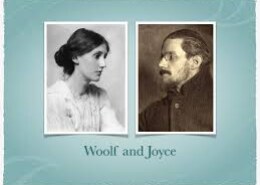Agatha Christie’s use of the confined space on the Orient Express in “Murder on the Orient Express” is key to both suspense and character growth resulting in a tight thriller. Suspense: - The small space creates a sense of hopelessness, and as people are trapped with a killer, the tension ratchets uRead more
Agatha Christie’s use of the confined space on the Orient Express in “Murder on the Orient Express” is key to both suspense and character growth resulting in a tight thriller. Suspense: – The small space creates a sense of hopelessness, and as people are trapped with a killer, the tension ratchets up. – Few ways to escape and no help from outside makes everyone feel more vulnerable. – Christie times her reveals and plot twists just right so you’re on the edge of your seat as you move through the narrow corridors and compartments. Character Development: – The small space forces characters to interact and show their true selves through conversations, actions and connections. – Christie uses the setting to reveal characters’ backstories, motivations and hidden truths making them more real and relatable. – The Orient Express becomes a pressure cooker and exposes character flaws and strengths and in the end the killer. By using the small space of the Orient Express, Christie creates a thriller that gets into people’s heads, relationships and the darker side of human nature and keeps you hooked until the very end.
See less

In "Jane Eyre," Charlotte Brontë intricately explores themes of social class and gender inequality, profoundly influencing the protagonist's development and relationships. Jane Eyre, an orphan of low social status, faces constant discrimination and hardship due to her class and gender. Her struggleRead more
In “Jane Eyre,” Charlotte Brontë intricately explores themes of social class and gender inequality, profoundly influencing the protagonist’s development and relationships. Jane Eyre, an orphan of low social status, faces constant discrimination and hardship due to her class and gender. Her struggle for self-respect and independence in a rigid, patriarchal society forms the core of her journey.
Social Class: Jane’s low social standing subjects her to maltreatment from characters like her Aunt Reed and the wealthy students at Lowood School. Despite her intelligence and moral fortitude, her class limits her opportunities, compelling her to work as a governess—a position that isolates her between the servant class and the gentry. Her relationship with Mr. Rochester highlights these class tensions, as she navigates the power imbalance between them. Jane’s insistence on maintaining her dignity and moral principles, despite her love for Rochester, underscores her resistance to being subjugated by class norms.
Gender Inequality: The novel also critiques gender roles and the limited options available to women. Jane’s desire for equality and self-expression challenges the expectations of women in her time. Her interactions with strong female characters like Helen Burns and Miss Temple influence her belief in moral integrity and intellectual equality. Moreover, her rejection of St. John Rivers’ proposal, which demands her submission to his rigid expectations, further emphasizes her quest for autonomy.
Through Jane’s experiences, Brontë advocates for a society where one’s worth is determined by character and intellect rather than social class or gender, ultimately portraying Jane’s development as a testament to personal strength and resilience against societal constraints.
See less